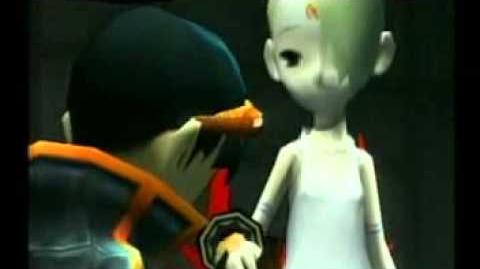| This article is from an external source and needs to be rewritten. Please help Breath of Fire Wiki by editing it. |
- "Many centuries ago, in the distant mists of ancient time, a disaster shook the Earth. The skies were charred with fiery blasts, and poisonous rivers flowed throughout the continents. Human beings, who once gazed upon glorious skies and breathed pure air, were forced to find a way to survive. They found that way under their feet... under the ground.
Sheldar became the capital city of the underground world. In their subterranean existence, the era of machines passed them by. Perhaps the people even forgot what the sky looked like....
Ryu, a member of the Sheldar Rangers, witnessed a mysterious event while checking out a Bio-chem company facility during a routine patrol.
Thus begins the story of Deep Earth...." - — -excerpt from the Breath of Fire V: Dragon Quarter Manual.
Breath of Fire V: Dragon Quarter (ブレス オブ ファイアV ドラゴンクォーター, Buresu obu Faia Faibu Doragon Kuōtā?) is a PlayStation 2 game released in 2003. It is the fifth RPG in the Breath of Fire series.
Gameplay[]
Breath of Fire V offers a a major departure from previous installments of the series. The game is a full 3D title with cel-shaded character models. There is no world map; instead, the world consists of full 3D environments that are connected together and divided by sectors. There are no resting spots such as inns to recover your party's health; thus, the players have to rely on consumables.
The game introduces several new concepts such as the PETS system, SOL System, and D-Counter.
Positive encounter and tactics system (PETS)[]
Dragon Quarter incorporates a combination of real-time strategy and turn-based combat in what is called the Positive Encounter and Tactics System (PETS). There are no random encounters, instead enemies can be seen on the field and combat is engaged when either the player strikes the enemy with their weapon or the enemy touches the player's character.
The real-time strategy portion, or "Positive Encounter", the player and enemies can move about in the environment together at the same time. During this time, the player can set up traps to hurt the enemy or lures to occupy the enemy. If either the player attacks an enemy or the enemy touches the player, the actual combat initiates. The actual combat portion, or "Tactics", is a turn based battling system based on tactical RPGs such as Final Fantasy Tactics. Any traps and lures not used up will still be effective. If the player attacks the enemy and the characters can easily overpower the enemy, the enemy is instantly defeated and the player is awarded Party XP equal to the amount of regular experience points earned.
Experience[]
Party XP is bonus XP that is stored and can be used on the characters out of battle as regular experience points. Party XP is usually awarded after battles. During battles, the player is rated based mostly on the tactical advantages the player has before the battle (such as attacking first or using traps) and how fast the player defeats the enemy and is expressed as a percentage as high as 300%. This is multiplied by the regular experience points awarded to determine how much Party XP is earned.
Scenario Overlay system[]
One of these features is the Scenario Overlay (SOL) system. This system encourages the player to return to previous points in the game, restart the game, and/or replay the game in order to unlock hidden areas, view additional story scenes, and make the characters more powerful so that the player can deal with the game's considerable difficulty level. Unlocked scenes from this system will have the
letters "SOL" on the bottom right to indicate that the event is a SOL unlocked event.
Because of how this system works and the game's difficulty, it is implied that the player is encouraged to not finish the game on the very first run and, instead, continuously restart. As enemies become stronger at a faster rate than the player characters, returning to earlier points of the game is a necessity to complete the game. The player is literally expected to lose difficult encounters and retry with additional capabilities. When the player loses, obtains 100% on the D-Counter, or uses an option called "Give Up" (to be used only when the game is deemed impossible to continue), the player is given two options -- SOL Restore and SOL Restart. SOL Restore allows the player to restart at the last save point with the characters at the same level in which they were defeated, while SOL Restart restarts the game entirely. Either option allows the player to retain any equipment equipped, any skills obtained, any Party XP earned, and any items and Zenny in storage.
The SOL system would be later re-used for Capcom's Xbox 360 game Dead Rising since both games share some development team members.
D-Counter[]
The Breath of Fire series took a leap and restricted Ryu to one dragon form, and he is limited in its use through the "Dragon Counter", a timer of sorts that slowly goes up to 100%. It has been calculated that you gain .01% for every 20 steps (though late in the game it may decrease to 9 steps), .01% per turn in battle, 1.0% for D-Diving (transforming into the dragon form), 1.0% for using the weakest attack (10AP), 1.25% for the medium attack (20AP), and 1.5% for the strong attack (30AP), as well as 1.0% per turn in battle for staying as a dragon. Ryu also has access to a D-Breath attack which rapidly fills the D-Counter while also rapidly increasing the damage done to the foe. Given enough time and sacrificed D-Counter, even the most powerful boss can be killed in one blow.
If the D-Counter reaches 100% before a certain event in the game, the dragon within Ryu takes over his body and soul and the game is over. The dragon form itself is extremely powerful, easily capable of defeating most boss characters with frightening speed. It is therefore a challenge among players to have the lowest Dragon Counter rating by winning the game as quickly as possible without using the Dragon abilities (if the player chooses "End" after reaching 100% on the D-Counter, a disturbing cutscene shows Odjn erupting from Ryu's body).
D-Ratio[]
Finally, there is an element of replayability in the form of the D-ratio, which is a rank that in the story is determined at birth, but in the game one can increase his or her D-ratio from the base of 1/8192 to as high as 1/4 (the dragon quarter), which makes certain areas of the game accessible. The highest "lock" in the game is 1/256, while the Dragon Blade you find in replays (which is based on your D-Ratio) maxes out at 1/8, so getting 1/4 is simply for show. In the game itself, D-ratio is a measure of the chance a person has to "link" with a dragon; the higher, the better. Therefore, people with higher D-ratios are wealthier and more powerful than those with lower D-ratios. In addition, the low-Ds are forced to live on the lower, more polluted regions of the world. In any event, the story doesn't change even when your D-Ratio changes (the game's characters will still refer to you as a Low-D, even when you have D-Ratio 1/4).
The D-Ratio for the replay mode is calculated at the end of the game by determining the player's rating. Some factors that determine this rating are time to complete the game, percentage of battles that were initiated by the player, number of treasure chests open, and percentage of maps explored.
Finite Resources[]
Due to the finite resources, players are encouraged to be very careful during enemy encounters and using consumables. Enemies do not respawn, so it is impossible to grind for XP or farm for zenny/items during a playthrough. Permanent saves require the use of Save Token, which are found in specific locations or dropped from certain foes.
Cast[]
Playable Characters[]
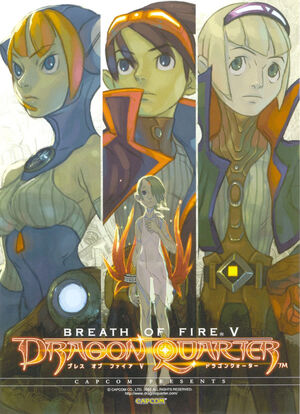
Breath of Fire V release poster
Non-Playable Characters[]
Setting[]
Breath of Fire V takes place in the age of Machines where humanity has been forced underground due to the misuse of powerful genetically engineered beings called Dragons. The people are ruled by a powerful and oppressive government headed by the mysterious Regents. Life and society is determined by the D-Ratio, a caste system where the aptitude and value of a human being is determined at birth, high ranking D-Ratios can live in the better sectors and have the opportunity to advance to high ranking government positions, while people with low D-Ratios are limited in where they can live and what they can do for society. Once a D-Ratio is determined for a person, it is set for life and can never really be changed. Years of living underground has led to a very polluted environment with rampant air pollution being a major problem. People with high D-Ratios live near the top of the shelter where the air is more clean while people of lower ranking are forced to live in the low sectors where the air quality is almost poisonous.
With no natural way to raise and reproduce food, humanity turned towards their science of genetic engineering to solve these issues. Genics are animals produced for various tasks by the BioCorp organization for use as a food source or labor purposes. Sometimes the Genics escape and go feral, causing various problems for the sectors. The Ranger organization was developed to work as a quasi-military police force that puts down rogue Genics and keeps the government's peace.
The oppressive nature of society has caused much discontent among the people and thus a secret anti-government organization known as Trinity, led by a former Regent has been causing problems for both the Rangers and the government as they fight back against the system.
People have lived underground for so long that the "Sky" is considered a myth.
Story[]
An unspecified amount of time before the game begins, humanity fled the desolate surface world to the underground in order to survive. Now, the world lies in a state of turmoil; polluted and stagnant, only the upper classes are able to escape to higher levels with better air. The game follows Ryu, a low level citizen, who rebels against his government in order to save the life of Nina, who is unable to survive underground, due to an experimental surgery performed on her in order to convert her into an air purification machine. According to Breath of Fire tradition, dragons play a large role in Dragon Quarter, and Ryu himself is able to transform into a dragon. Despite this tradition, however, the main influence of Dragons is felt in the storyline of the game and not the gameplay - unlike every other installment, Ryu can only transform into one Dragon form. The focus of the story is on Ryu's escape to the surface with Nina, accompanied by the ever-watchful Lin. A majority of the game simply focuses on Ryu and company's ascent from over a kilometer below the surface to ground level, traversing dark underground passageways and fending off the encounters they find. On the lowest levels one can find those with low D-ratios; as one ascends the levels, the D-ratio of the inhabitants increases. As the name suggests, D-ratios are expressed as a fraction with a numerator of 1; lower numbers in the denominators indicate a higher D-Ratio. As one can see, D-ratio is the main determinant of social status in the world of Dragon Quarter. The highest D-ratio a human can achieve is 1/4 - this is the Dragon Quarter of the title, which represents a one in four chance of linking with an available dragon.
There are two main subplots in the game; the first one concerns the five mysterious rulers of the entire underground world, who seem to be ubiquitous in their ability to gain information and their ability to act on this information. These rulers also reveal the storyline via a legend passed down that says a boy with the power to become a dragon will bring the world back to the surface.
The other subplot is introduced almost at the outset of the game: a rivalry between Ryu and Bosch, the latter of which is portrayed as an entitled, monomaniacal elitist. Bosch eventually wishes to use Ryu as his lackey in order to attain a higher rank, due to his (Bosch's) high D-ratio of 1/64. Early on in the story, Bosch inadvertently releases Ryu's ability to become a dragon when he tries to kill Ryu; after he has seen this power, Bosch's will to beat Ryu in battle drives him to undergo experimental dragon fusion, eventually resulting in his ability to become a dragon as well.
Ryu's entire struggle comes to a head as he is forced to invade the upper levels of the underground to lead Nina to the clean air she needs to survive. Three of the five regents which govern the entire world Ryu knows fall beneath his blade before he comes face to face with Elyon.
Elyon acknowledges Ryu's power, noting that none have ever come closer to reclaiming the surface world than he. He then summons two pieces of himself he banished away to extend his life, using his newly rediscovered power to attack Ryu, Nina and Lin. After a fierce battle, Elyon lays defeated and Ryu notes that Elyon was "Odjn's first", heavily alluding to the fact that Elyon was directly responsible for Mankind not reclaiming the sky hundreds of years ago because he feared to push his power to the limit.
With their final obstacle out of the way, Ryu, Lin and Nina venture forth to the hatch itself. There Bosch catches up with them, now containing his own true dragon instead of a mere construct. He and Ryu clash for one final time before Bosch is truly defeated. Seeming to give up, Bosch gives himself over to Chertyre and allows the dragon to manifest himself fully in the world again.
Ryu, faced with a true dragon and Odjn's power ready to kill him is forced to ignore the possibility of death and use his own D-Breath attack to channel Odjn's power against Chertyre. It is important to note that this brings his D-Counter to 100%, something to be avoided at all costs during other points in the game.
From this point, which should kill him, Ryu channels more and more of Odjn's power, his D-Counter rising far above 100%, and finally defeats Chertyre and opens the way to the surface. As he lays dying, Ryu tells Lin and Nina to go on ahead, that he'll catch up with them in a moment.
As Nina and Lin walk up the spiral staircase to the surface, Ryu is unable to move, simply waiting for his last moments. Odjn comes to him then (most likely, he has been separated from Ryu's body after the final fight), asking if Ryu has any regrets. Ryu replies that he has none, stating that reaching the surface was his only goal. Odjn exults, telling Ryu that it was not his power which brought Ryu this far, but his own determination. Soon afterwards, Ryu dies, causing Lin to grieve and Nina to descend back to see him. Before he can completely fade away, though, Odjn tells him, "the sky is now yours, my friend," and restores Ryu's life by remerging with him. As Nina looks at him worriedly, Ryu waves his hand weakly to indicate that he's fine, and Nina smiles. What the three of them would do for the rest of their life on the pure, lush, green surface world remains a mystery.
Development[]
Breath of Fire V: Dragon Quarter's development began around April 2000, before the PlayStation 2's design was finalized but after the name had been announced.[1] Breath of Fire V was first announced by Capcom in 2002. The project was helmed by longtime series director Makoto Ikehara, who was inspired to create a game with a dystopian setting after reading the alternate history novel Gofungo no Sekai (五分後の世界, lit. The World Five Minutes From Now) written by Ryu Murakami. Character Designs were done by series veteran Tatsuya Yoshikawa and utilized a thin and angular design for the characters. Music was handled by Hitoshi Sakimoto who is best known for working on the original Final Fantasy Tactics, and Yasunori Mitsuda who is best known for his soundtrack to Chrono Trigger. The game was designed to be difficult because the director felt the previous installments were "too easy" and as development on, the game's difficulty gradually increased. During the development process, an online diary was kept by the team chronicling their work.
The game incorporated many of the design trends that RPGs were experimenting with in the early 2000s, such as the omission of random encounters and overworld in favor of real time battles and environments. The game also tackled the issue plaguing the genre such as easy difficulty and lack of replay value. Series artist Tatsuya Yoshikawa explained that the team wanted to capture the pleasure of "success through struggle".[2] To deter cheaters, the developers made it so players can only transfer their saves as opposed to making copies to fall back on in case they got a "Game Over".
The game heavily utilizes Russian words and thought to help reinforce the dystopian feel. The game also played with many longtime series staples such as Ryu no longer being mute or a member of the Dragon Clan, the removal of many of the series' Tribes, and the return of the Ranger organization. It is also the only game in the series not to feature the character Deis.
The game suffers from a rushed development which resulted in several story and gameplay mechanics being dropped. An online mode was removed fairly early on in development and the fishing mini-game was also dropped as the title's release date drew near. The director wanted to place a scene in the game that showed how the surface was destroyed, but it too had to be cut due to deadline restrictions.
After the game's Japanese release, Capcom announced it would be coming to the U.S. and PAL regions. However, in these releases, the numeral "V" was dropped from the game's title, making it the only series entry to retain its subtitle outside of Japan.
Gallery[]
Videos[]
See Also[]
- For a list of Breath of Fire V Characters, see here
- For a list of Breath of Fire V Locations, see here
- For a list of Breath of Fire V Abilities, see here
- For a list of Breath of Fire V Enemies, see here
- For a list of Breath of Fire V Items, see here
- For a list of Breath of Fire V Production Staff, see here
- For the complete story of Breath of Fire V, see here
- For box art, images and artwork from Breath of Fire V, see here
External Links[]
- Official Website (Archived) (japanese)
References[]
- ↑ https://web.archive.org/web/20150723012556/https://www.rpgfan.com/features/creatorstalk/index3.html
- ↑ [1]
- ↑ Capcom, 2005. Breath of Fire Official Complete Works. Chronicle, Ryu's Story, Pg. 168, ISBN: 4862330010
| Main series | ||
| Breath of Fire · Breath of Fire II · Breath of Fire III · Breath of Fire IV · Breath of Fire: Dragon Quarter · Breath of Fire 6 | ||
| Spinoffs | ||
| Breath of Daifugō · Breath of Fire IV: Honō no Ken to Kaze no Mahō · Breath of Fire IV: Yōsei-tachi to Hikari no Kagi · Breath of Fire: Ryū no Tsurishi | ||
| Categories | ||
| Abilities · Characters · Items · Locations · Tribes | ||

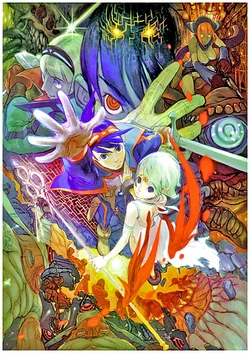
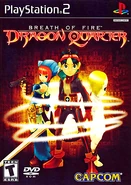
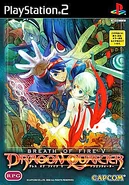
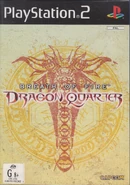
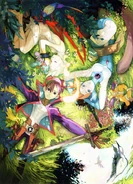
![BoFVBuilding.jpg (118 KB) Official artwork of Sheldar's exterior[3]](https://static.wikia.nocookie.net/bof/images/0/05/BoFVBuilding.jpg/revision/latest/scale-to-width-down/132?cb=20130630183125)
